
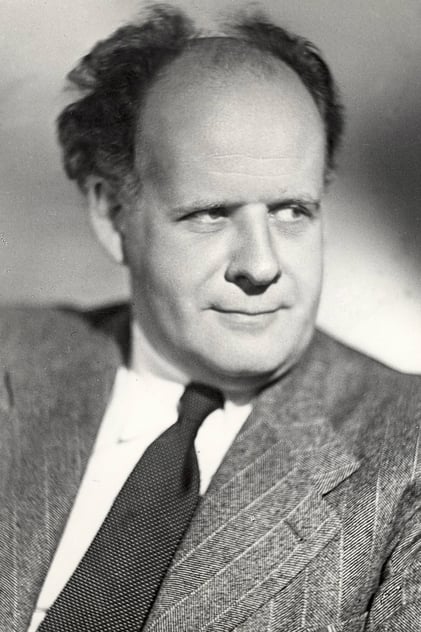
Sergei Eisenstein
Born: January 23, 1898
Died: February 11, 1948
in Riga, Russian Empire
Died: February 11, 1948
in Riga, Russian Empire
Sergei Mikhailovich Eisenstein was a pioneering Soviet Russian film director and film theorist, often considered to be the "Father of Montage." He is noted in particular for his silent films Strike (1924), Battleship Potemkin (1925) and October (1927), as well as the historical epics Alexander Nevsky (1938) and Ivan the Terrible (1944, 1958). His work profoundly influenced early filmmakers owing to his innovative use of and writings about montage.
Movies for Sergei Eisenstein...
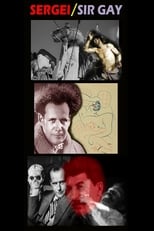
Title: Sergei/Sir Gay
Released: January 27, 2017
Type: Movie
As a teenager, Sergei Eisenstein signed his drawings with "Sir Gay". Mark Rappaport sees clear signs of his sexual preferences throughout the Russian’s film oeuvre. Numerous asides illustrate how Hollywood productions likewise frequently played with nods and winks and typical motifs from gay culture.


Title: The Worlds of Mei Lanfang
Released: February 15, 2000
Type: Movie
The true story of Mei Lanfang, China's greatest opera star; a husband and father whose world-wide fame came from the portrayal of women. His fascinating life was the basis for the feature film Farewell My Concubine.

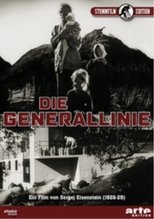
Title: The Different Faces of Sergei Eisenstein
Released: February 22, 1998
Type: Movie
Eisenstein is celebrated either as the last Leonardo da Vinci of modernity or attacked as Faustus, Faustus who made a pact with the devil. Whichever is the case, neither friends nor foes are able to resist the powerful draw of Eisenstein's work. He was a person of complexity who was understood in very different ways, as a generous cosmopolitan and a stingy hermit, a cynic and yet a highly sensitive, vulnerable being. The film deals with a number of phases in Eisenstein's life, and tries to get away from the orthodox image of him by using new material to shed a different light on his biography.

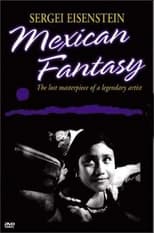
Title: Sergei Eisenstein: Mexican Fantasy
Character: Himself
Released: February 12, 1998
Type: Movie
Eisenstein shot 50 hours of footage on location in Mexico in 1931 and 32 for what would have become ¡Que viva México!, but was not able to finish the film. Following two wildly different reconstruction attempts in 1939 (Marie Seton's 'Time in the Sun') and 1979 (Grigori Alexandrov's '¡Que viva México!') Kovalov has here compiled another hypothetical version of what Eisenstein's film might have been.

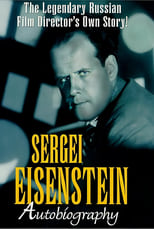
Title: Sergei Eisenstein: Autobiography
Released: January 1, 1996
Type: Movie
A free film adaptation of the director's memoirs. In form, this is the "stream of consciousness" that attracted Sergei Eisenstein after getting acquainted with the experiments of James Joyce. The outer outline of the film is a long foreign trip of the director, which began in 1929, during which he recalls his past life and considers creative ideas. The film is constructed as a free alternation of reality, dreams, and fantasies. The material for it is fragments from the films of Sergei Eisenstein and his fellow contemporaries, documentary footage depicting the director and his time. The wide coverage of the faces and events reflected in the film shows the special role of Sergei Eisenstein in the culture of the twentieth century…


Title: Island of the Dead
Released: September 15, 1993
Type: Movie
The Island of the Dead is a film about the demise of the Russian Epocha Modern. The symbol of this culture was the legendary Russian film star Vera Kholodnaya, who evoked a poetic image of the young urban woman on the silver screen. Her death in 1919, shrouded in tragedy and mystery, put a symbolic end to the pre-Revolutionary period. The Island of the Dead is composed of fragments from numerous films from this period, juxtaposed with other contemporary artistic expressions such as music and painting. Kovalov shows convincingly how the fragile beauty of the Russian Epocha Modern had to make way for the pressure of Futurism, Constructivism and other 'progressive trends', and how these '-isms' were then also relegated to the melting pot to be remoulded by totalitarian norms.

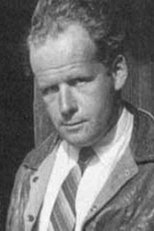
Title: Eisenstein en México
Released: January 1, 1984
Type: Movie
Inspired by the social changes that the Revolution brought to our country and the admiration he felt for Mexican art, the Russian filmmaker Sergei M. Eisenstein traveled to Mexico with the intention of filming a film mosaic that culminated in the most beautiful non-existent film. The details of this odyssey are exposed in this episode of the classic television series Those Who Made Our Cinema.

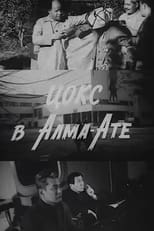
Title: TsOKS in Alma-Ata
Character: Archive footage
Released: January 24, 1974
Type: Movie
In August 1941, two largest Soviet film studios Mosfilm and Lenfilm were evacuated to Alma-Ata, Kazakhstan. There, together with the newly founded Alma-Ata Film Studio, they were merged into TsOKS (Central United Film Studio), which became the main center of film production in the country until 1944. Now Kazakh film industry veterans who worked at the studio during these years recall the dawn of national cinema and years of work with Eisenstein, Pudovkin, Romm and others.

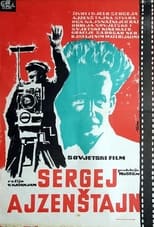
Title: Sergei Eisenstein
Character: Himself (archive footage)
Released: January 1, 1958
Type: Movie
Documentary made for the 60th anniversary of Soviet director Sergei Eisenstein.


Title: An Appeal to the Jews of the World
Released: January 1, 1941
Type: Movie
In 1941, a group of the Soviet Union's most prominent Jewish writers and artists, including Solomon Mikhoels, Peretz Markish, and Sergei Eisenstein, signed an appeal to Jews throughout the world, asking them to join the Soviet people in fighting against fascism.




Title: We're switching to Hollywood
Character: Self (uncredited)
Released: June 9, 1931
Type: Movie
A German reporter visits Hollywood and is escorted through the MGM Studio by a German nobleman, who is working there as an extra. They meet and speak to several actors, primarily Buster Keaton, John Gilbert, Joan Crawford and Heinrich George. Then they meet Adolphe Menjou, who rehearses a long scene in German. A final scene shows stars arriving at a film premiere, including Jean Harlow, Norma Shearer and Wallace Beery.

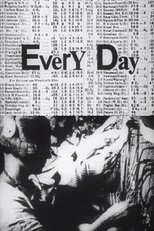
Title: Every Day
Character: Policeman
Released: April 30, 1929
Type: Movie
Experimental documentary focusing on a day in the life of city workers, featuring montage sequences and repetition to emphasise the monotony of routine office work.


Title: The Storming of La Sarraz
Character: Commander of the Army of Independents
Released: January 1, 1929
Type: Movie
A farcical war between the forces of Commercial Cinema and Independent Cinema.

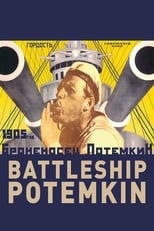
Title: Battleship Potemkin
Character: Odessa Citizen
Released: December 24, 1925
Type: Movie
A dramatized account of a great Russian naval mutiny and a resultant public demonstration, showing support, which brought on a police massacre. The film had an incredible impact on the development of cinema and is a masterful example of montage editing.

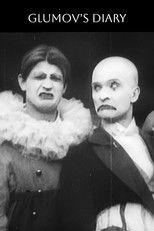
Title: Glumov's Diary
Character: Self (takes bow at end)
Released: May 21, 1923
Type: Movie
Filmic insert to Eisenstein's modernized, free adaptation of Ostrovskiy's 19th-century Russian stage play, "The Wise Man" ("Na vsyakogo mudretsa dovolno prostoty"). The anti-hero Glumov tries to escape exposure in the midst of acrobatics, derring-do, and farcical clowning. Several members of Eisenstein's troupe at the legendary "Proletkult" stage theatre in Moscow briefly appear in this little film.
